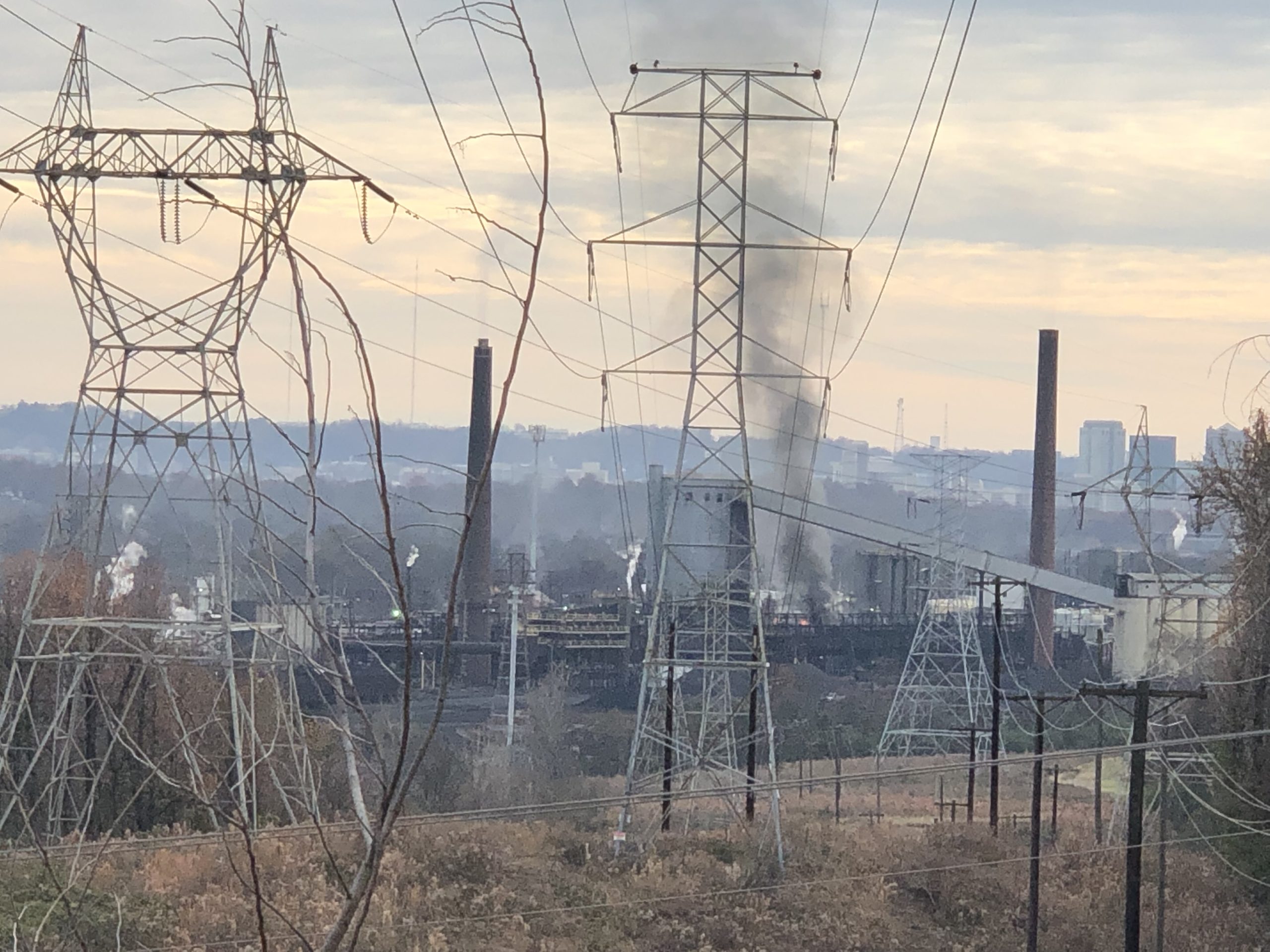The air quality we breathe has become an increasingly pressing issue in today’s world of fast industrialization. Although we may be mindful of air pollutants like smog and automobile emissions, particulate matter (PM2.5) poses an invisible hazard. These minute particles, which have a diameter of no more than 2.5 micrometers, represent serious health hazards and significantly affect our environment and general well-being. We will delve into the realm of PM2.5 particles in this blog post, learning about their causes, impacts, and precautions that we can take.
PM stands for particulate matter (particle pollution): the term for a mixture of solid particles and liquid droplets in the air. Some particles, such as dust, dirt, soot, or smoke, are large or dark enough to be seen by the naked eye. Others are so small that they can only be detected using an electron microscope.
PM10: inhalable particles, with diameters generally 10 micrometers and smaller; and PM2.5: fine inhalable particles, with diameters typically 2.5 micrometers and smaller.
How small is 2.5 micrometers? Think about a single hair on your head. The average human hair is about 70 micrometers in diameter, making it 30 times larger than the largest fine particle.
How is PM2.5 formed?
Primary Sources: Primary PM2.5 particles that directly emit into the atmosphere can originate from natural sources (such as dust storms and forest fires) and anthropogenic sources (such as fossil fuel combustion, cigarette smoke, and biomass burning).
Secondary Sources: PM2.5 particles are generated by chemical reactions between PM from anthropogenic and biogenic sources.
Power plants and coal fires are examples of secondary sources.
What are the routes of exposure?
- Nose • Mouth • Throat
For PM2.5, short-term exposures (up to 24 hours) are associated with premature mortality, increased hospital admissions for heart or lung causes, acute and chronic bronchitis, asthma attacks, emergency room visits, respiratory symptoms, and restricted activity days. These adverse health effects have been reported primarily in infants, children, and older adults with pre-existing heart or lung diseases.
How does PM2.5 affect your health and environment?
Exposure to environmental PM2.5 is associated with an increased incidence and mortality of many diseases. The high risk of PM2.5-related death from stroke, ischemic heart disease, chronic obstructive pulmonary disease (COPD), lung cancer, and other diseases around the world has been demonstrated in several studies.
The lungs, the initial sites of PM2.5 deposition in the airway, are among the primary targets of PM2.5-induced toxicity, which leads to airway inflammation, impairs normal immune responses in the lungs, and makes them susceptible to various respiratory infections.
Vulnerable Populations: Children, older people, and people with lung and heart disease (including asthma and chronic obstructive pulmonary disease-COPD).
Environmental impact:
PM2.5 particles not only have a negative influence on human health but also on the environment. When PM2.5 particles discharge into the atmosphere, they can create fog and haze, worsening air quality and reducing visibility. Additionally, these particles have the potential to accumulate on soil, plant life, and bodies of water, harming ecosystems and reducing agricultural production. Further, PM2.5 particles can scatter and absorb sunlight, altering weather patterns and causing global warming.
Effects of exposure to PM2.5:
Short term: increased rate of myocardial infarction and ischemia for those at risk of exacerbation
of cardiac failure.
Increased incidence of arrhythmias, deep vein thrombosis, stroke, wheezing, asthma, COPD, bronchitis, and frequent emergency visits.
Long-term: myocardial infarction, increased blood coagulability, atherosclerosis, increase in systemic markers, pneumonia, lung cancers, impaired lung development in children, increased incidence of preterm births, and low birth weight. Increased risk of Alzheimer’s, neurodegenerative diseases, and Parkinson’s disease.
National Ambient Air Quality Standards PM2.5
- Currently, the Environmental Protection Agency (EPA) has primary and secondary standards for PM2.5 (annual average standards with levels of 12.0 μg/m3 and 15.0 μg/m3, respectively).
- 24-hour standards with 98th percentile forms and levels of 35 μg/m3).
Protecting ourselves from PM2.5 particles:
While it is challenging to remove PM2.5 spores from the air people inhale, there are actions we can do to reduce exposure and safeguard our health significantly:
Remain Informed: To be aware of when the pollution levels are excessive and to take the appropriate precautions, regularly monitor local air quality indicators and predictions.
Create a clean interior atmosphere by using air purifiers with HEPA filters at home or the office to lower indoor PM2.5 levels. Close the doors and windows when there is a lot of pollution.
Use safety masks: When the amount of pollution outside is excessive, covering your face with a mask rated N95 or above can help to reduce the risk of inhaling PM2.5 particles.
Limit outside activities: If there is poor air quality, try to limit outdoor pursuits, particularly in locations with high pollution levels or during maximum pollution hours.
Encourage using renewable energy sources and legislation to reduce manufacturing, transport, and energy production emissions.
AirNow: Every day, the Air Quality Index (AQI) tells you how clean or polluted your outdoor air is, along with associated health effects that may be of concern. The AQI translates air quality data into numbers and colors that help people understand when to take action to protect their health.
Go to About AirNow to learn how you can get AQI notifications.
Also, learn how the Air Quality Flag Program can help air agencies, schools, and other community organizations notify citizens of harmful conditions and adjust outdoor physical activities.
[1] Environmental Protection Agency. (n.d.). EPA. Retrieved February 1, 2023, from https://www.epa.gov/pm-pollution/particulate-matter-pm-basics#effects
[2] Beelen R., Hoek G., Raaschou-Nielsen O., Stafoggia M., Andersen Z.J., Weinmayr G., Hoffmann B., Wolf K., Samoli E., Fischer P.H., et al. Natural-Cause Mortality and Long-Term Exposure to Particle Components: An Analysis of 19 European Cohorts Within the Multi-Center ESCAPE Project. Environ. Health Perspect. 2015;123:525–533. doi: 10.1289/ehp.1408095.
[3] Shiraiwa M., Ueda K., Pozzer A., Lammel G., Kampf C.J., Fushimi A., Enami S., Arangio A.M., Fröhlich-Nowoisky J., Fujitani Y., et al. Aerosol Health Effects from Molecular to Global Scales. Environ. Sci. Technol. 2017;51:13545–13567. doi: 10.1021/acs.est.7b04417.
[4] Thangavel, P., Park, D., & Lee, Y. C. (2022). Recent Insights into Particulate Matter (PM2.5)-Mediated Toxicity in Humans: An Overview. International journal of environmental research and public health, 19(12), 7511. https://doi.org/10.3390/ijerph1912751
[5] California Air Resources Board. Inhalable Particulate Matter and Health (PM2.5 and PM10) | California Air Resources Board. (n.d.). Retrieved February 1, 2023, from https://ww2.arb.ca.gov/es/resources/inhalable-particulate-matter-and-health
[6] Jia H., Liu Y., Guo D., He W., Zhao L., Xia S. PM2.5-induced pulmonary inflammation via activating of the NLRP3/caspase-1 signaling pathway. Environ. Toxicol. 2021;36:298–307. doi: 10.1002/tox.23035
[7] Centers for Disease Control and Prevention. (2022, November 21). Particle pollution. Centers for Disease Control and Prevention. Retrieved February 1, 2023, from https://www.cdc.gov/air/particulate_matter.html
[8] Environmental Protection Agency. (n.d.). EPA. Retrieved February 1, 2023, from https://www.epa.gov/pm-pollution/national-ambient-air-quality-standards-naaqs-pm
[9] Grisales-Romero, H., Piñeros-Jiménez, J. G., Nieto, E., Porras-Cataño, S., Montealegre, N., González, D., & Ospina, D. (2021). Local attributable burden disease to PM 2.5 ambient air pollution in Medellín, Colombia, 2010-2016. F1000Research, 10, 428. https://doi.org/10.12688/f1000research.52025.2



